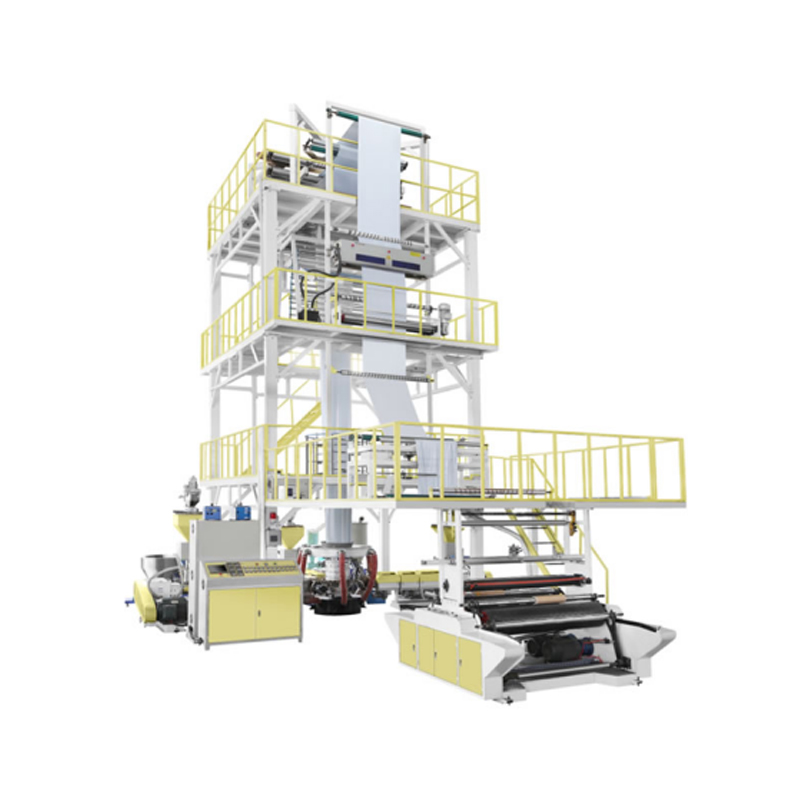Three-Layer Supply Extrusion Blown Film Machines Deliver Versatility and High-Precision Film Performance
 By Admin
By Admin
As industries increasingly demand films with specific mechanical properties, aesthetic qualities, and functional barriers, equipment manufacturers have responded with more advanced technologies to meet these evolving needs. Among these, the Three-Layer Supply Extrusion Blown Film Machine has emerged as a solution, offering a balance of performance, customization, and production reliability.
1. Multi-Layer Structure for Functional Versatility
The defining characteristic of a Three-Layer Supply Extrusion Blown Film Machine is its ability to co-extrude three distinct layers of polymer materials into a single film. Each layer can be individually formulated and controlled, allowing manufacturers to combine properties like strength, clarity, and barrier protection into one finished product.
This structure is ideal for applications requiring multi-functionality, such as food packaging films that need a moisture-resistant outer layer, a core barrier layer, and a heat-sealable inner layer. The multi-layer capability also allows for the use of cost-effective or recycled materials in the middle layer, without compromising the performance of the outer surfaces.
2. Enhanced Film Strength and Durability
Thanks to its layered design, the machine produces films with mechanical properties, such as high tensile strength, puncture resistance, and better elongation. By strategically selecting materials for each layer—such as LLDPE for flexibility, HDPE for strength, and metallocene resins for sealing—manufacturers can tailor the film’s mechanical performance to suit different end-use requirements.
These robust films are particularly valuable in heavy-duty packaging applications, agricultural films, carrier bags, and protective films used in transportation and logistics.
3. Thickness Uniformity and Gauge Control
One of the key performance indicators of film extrusion is thickness uniformity. Three-Layer Supply Extrusion Blown Film Machines are engineered with precision die heads, automatic air rings, and thickness control systems, enabling extremely accurate distribution of material across the film’s width.
Advanced monitoring systems provide real-time feedback and adjustments, film variation and reducing material waste. Consistent thickness is critical not only for appearance and strength but also for downstream processes such as printing, sealing, and lamination.

4. High Productivity and Stable Output
These machines are designed for continuous, high-speed production, with outputs ranging from 150 to 400 kg/hour depending on model size and material choice. The three-extruder configuration allows for simultaneous processing of different resins, improving efficiency and reducing the need for multiple production runs.
Thanks to robust frame structures, optimized cooling systems, and advanced temperature control units, Three-Layer Supply Extrusion machines can maintain stable operation over long production cycles, significantly reducing downtime and increasing productivity.
5. Material Flexibility and Customization
One of the major strengths of the three-layer configuration is material flexibility. These machines are compatible with a wide range of polymers, including LDPE, LLDPE, HDPE, EVA, and biodegradable blends. Each extruder can be fine-tuned for its specific material, offering customization across a wide range of applications.
This allows manufacturers to switch between film types — from transparent films to colored bags, shrink wrap, or lamination-grade films — with machine reconfiguration.
6. Energy-Efficient Design and Automation Features
Modern Three-Layer Supply Extrusion Blown Film Machines incorporate energy-saving components such as inverter-controlled motors, low-friction screws, and high-efficiency heaters. In addition, they often feature automated recipe management, digital temperature controls, and touch-screen interfaces, enabling quick parameter changes and reducing operator error.
Automation not only improves ease of use but also ensures more consistent film quality and faster changeovers, especially valuable in high-mix, low-volume production environments.
7. Compatibility with Recycled and Eco-Friendly Materials
As sustainability takes center stage in the packaging industry, the adaptability of Three-Layer Supply Extrusion systems to recycled and biodegradable materials makes them future-proof. Recycled content can be used in the middle layer, while virgin or food-safe resins are applied on the inner and outer layers for regulatory compliance and product protection.




